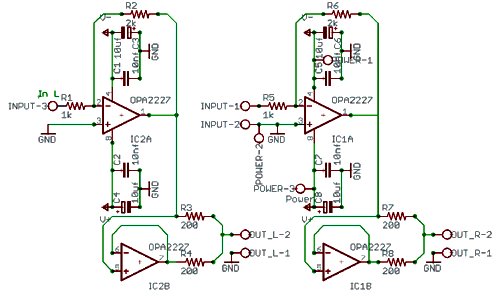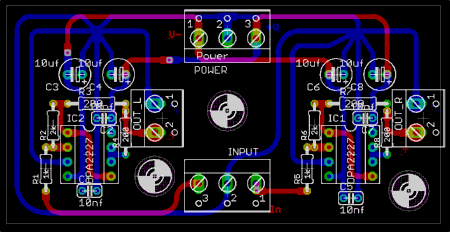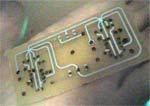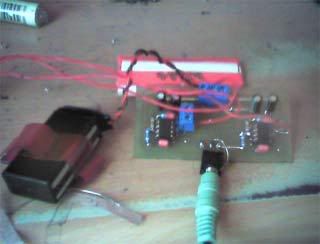Nordic
100+ Head-Fier
- Joined
- Oct 1, 2006
- Posts
- 103
- Likes
- 0
Its so nice to be back....
Bringing you a new toy.
If you have any opa2227 chips around, please try this one, or order some samples from TI.
It is an adaption of the headphone amp shown in the datasheet. Using 1 dual opamp per channel with the second acting as a current pump.
The sound is phenomenal...it felt treble light at first, but that is only because so much more haze is removed from hipgh frequency sounds...
I have built alot of headphone amps now, and this gets my vote... for best of my attempts... mine is running of a single 9v battery... if you choose higher gain (you can go to x5 without compensation caps)... you may need 2 batteries.
Circuit is not hotswapable with other opamps as it requires no offset resistor to ground.... well maybe if you cut the trace on pin3 and put your resistor over the cut...
Ok, go, Do it, do it.



Bringing you a new toy.
If you have any opa2227 chips around, please try this one, or order some samples from TI.
It is an adaption of the headphone amp shown in the datasheet. Using 1 dual opamp per channel with the second acting as a current pump.
The sound is phenomenal...it felt treble light at first, but that is only because so much more haze is removed from hipgh frequency sounds...
I have built alot of headphone amps now, and this gets my vote... for best of my attempts... mine is running of a single 9v battery... if you choose higher gain (you can go to x5 without compensation caps)... you may need 2 batteries.
Circuit is not hotswapable with other opamps as it requires no offset resistor to ground.... well maybe if you cut the trace on pin3 and put your resistor over the cut...
Ok, go, Do it, do it.







